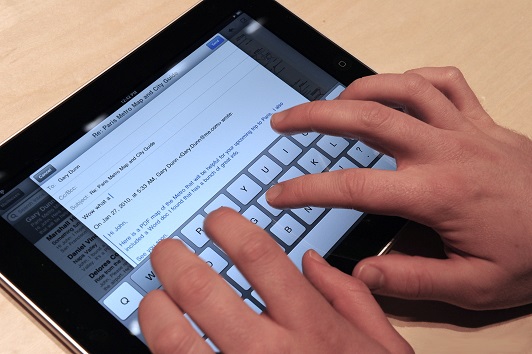Touch screen technology have now become very common. Also with the steady decrease in prices, touch screen monitors have become very much affordable. But did you ever think how exactly they work?? This article is going to answer that question. Additionally, you get to know all the touch screen technologies out there in the market and how each one varies from the other.
Few Most Used Touch Screen Technologies:
1.) Resistive Touch screens:
Resistive touch screen panels are relatively simple and much widely available. This touch screen technology involves several layers. In which two important layers are the conductive layer and a metallic resistive layer. These layers are thin, transparent and are present on a normal glass panel. These resistive layers are separated by a thin gap and held apart by spacers. On top of this whole setup is placed a scratch resistant layer. Whenever a touch is registered (the two layers meet at the exact spot), an electrical current flows from the conducting plate into the resistive plate at that position. Due to this there is change in the electric field. This change is noted and the computer calculates the exact co-ordinates of the point of contact. Immediately after this, a special driver converts this information into a language which the operating system can understand.
Buy Now: Raspberry Pi LCD Monitor with Resistive Touch Screen for Rs.1650
The Resistive touch technologies are mostly used in hospitals, restaurants and for industrial purposes. A major benefit of resistive touch screen technology is its low cost. The other advantage is that these screens can be operated with your gloves on or anyother finger substitute.
These touch-screen technologies operate when a considerable amount of pressure is applied. Also due to their poorer contrasts, this touch screen technology is not very popular among computers and mobile phones.
2.) Capacitive Touch Screens:
Capacitive touch screens are made up of lesser layers than the resistive touch-screens. Due to this reason they have the ability to offer superior optical performance. Nearly 90% of the light is transmitted when a capacitive touch system is employed.
The capacitive touch screen technology involves an insulating material (like glass) coated perfectly with a transparent conducting material. This layer stores all the electrical charge. Whenever you touch the screen with your finger, some charge is transferred. This results in minute decrease in charge on the capacitive layer. The decrease in charge is continuously monitored by the circuits which feed this information to the related drivers. This technology is the earlier one which is by far in use. The recent advancement include the projected capacitive touch sensors which are being used in smartphones.
But here you have to remember that if you were operating the screen with gloves on there is no charge transfer, due to which the touch-screen doesn’t respond to your actions.
3.) Surface Acoustic Wave Touch Screen Technology:
Surface acoustic wave(SAW) technology is very famous for its ability to transmit 100% light. Due to this, these touch screens provide the users with high image clarities. In this type of touch screens an ultrasonic wave passes over the screen between two transducers. Whenever there is a touch, some energy from the wave is absorbed. The receiving transducer detects any disturbance caused due to a touch and can locate it easily. The 100% light transmission is due to the absence of any additional layers.
This technology only suffers the backdrop from the fact that they are very vulnerable. They get damaged by outside elements and the contaminants on the surface.
5-wire resistive touch, Multi-touch Surface Wave, Secure Touch Surface Wave are the several other touch screen technologies which are very much application specific.
Conclusion:
Resistive touch screens are cheap and less efficient. Capacitive touch screens have good optical performance and more trustworthy. Surface Acoustic Wave touch screens provide the best image clarities, cost much and are vulnerable.
Also Read: 5 Reasons Why You Need To Have A Touch Screen Laptop


